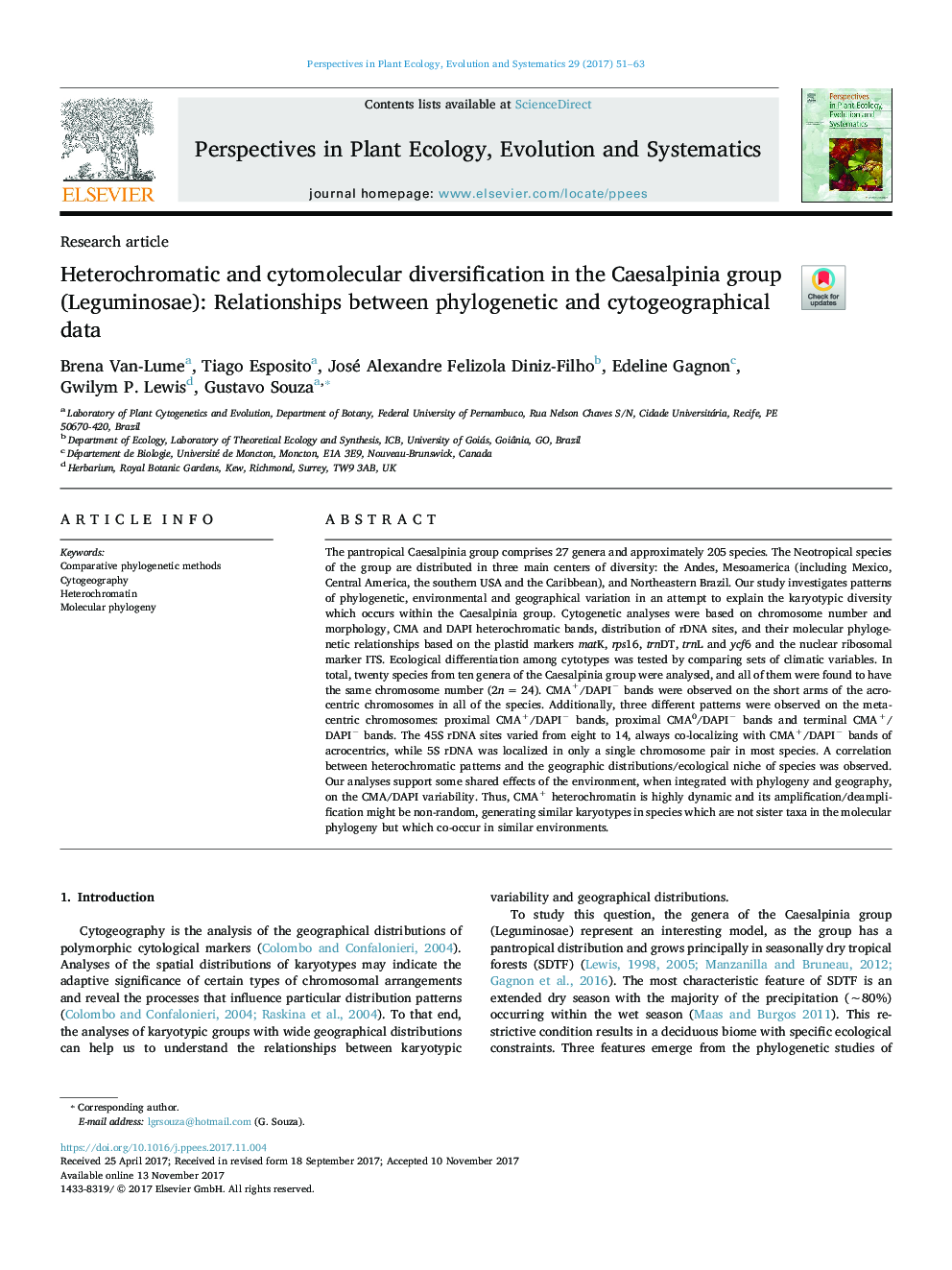| کد مقاله | کد نشریه | سال انتشار | مقاله انگلیسی | نسخه تمام متن |
|---|---|---|---|---|
| 8849537 | 1618591 | 2017 | 13 صفحه PDF | دانلود رایگان |
عنوان انگلیسی مقاله ISI
Heterochromatic and cytomolecular diversification in the Caesalpinia group (Leguminosae): Relationships between phylogenetic and cytogeographical data
دانلود مقاله + سفارش ترجمه
دانلود مقاله ISI انگلیسی
رایگان برای ایرانیان
موضوعات مرتبط
علوم زیستی و بیوفناوری
علوم کشاورزی و بیولوژیک
بوم شناسی، تکامل، رفتار و سامانه شناسی
پیش نمایش صفحه اول مقاله

چکیده انگلیسی
The pantropical Caesalpinia group comprises 27 genera and approximately 205 species. The Neotropical species of the group are distributed in three main centers of diversity: the Andes, Mesoamerica (including Mexico, Central America, the southern USA and the Caribbean), and Northeastern Brazil. Our study investigates patterns of phylogenetic, environmental and geographical variation in an attempt to explain the karyotypic diversity which occurs within the Caesalpinia group. Cytogenetic analyses were based on chromosome number and morphology, CMA and DAPI heterochromatic bands, distribution of rDNA sites, and their molecular phylogenetic relationships based on the plastid markers matK, rps16, trnDT, trnL and ycf6 and the nuclear ribosomal marker ITS. Ecological differentiation among cytotypes was tested by comparing sets of climatic variables. In total, twenty species from ten genera of the Caesalpinia group were analysed, and all of them were found to have the same chromosome number (2n = 24). CMA+/DAPIâ bands were observed on the short arms of the acrocentric chromosomes in all of the species. Additionally, three different patterns were observed on the metacentric chromosomes: proximal CMA+/DAPIâ bands, proximal CMA0/DAPIâ bands and terminal CMA+/DAPIâ bands. The 45S rDNA sites varied from eight to 14, always co-localizing with CMA+/DAPIâ bands of acrocentrics, while 5S rDNA was localized in only a single chromosome pair in most species. A correlation between heterochromatic patterns and the geographic distributions/ecological niche of species was observed. Our analyses support some shared effects of the environment, when integrated with phylogeny and geography, on the CMA/DAPI variability. Thus, CMA+ heterochromatin is highly dynamic and its amplification/deamplification might be non-random, generating similar karyotypes in species which are not sister taxa in the molecular phylogeny but which co-occur in similar environments.
ناشر
Database: Elsevier - ScienceDirect (ساینس دایرکت)
Journal: Perspectives in Plant Ecology, Evolution and Systematics - Volume 29, December 2017, Pages 51-63
Journal: Perspectives in Plant Ecology, Evolution and Systematics - Volume 29, December 2017, Pages 51-63
نویسندگان
Brena Van-Lume, Tiago Esposito, José Alexandre Felizola Diniz-Filho, Edeline Gagnon, Gwilym P. Lewis, Gustavo Souza,